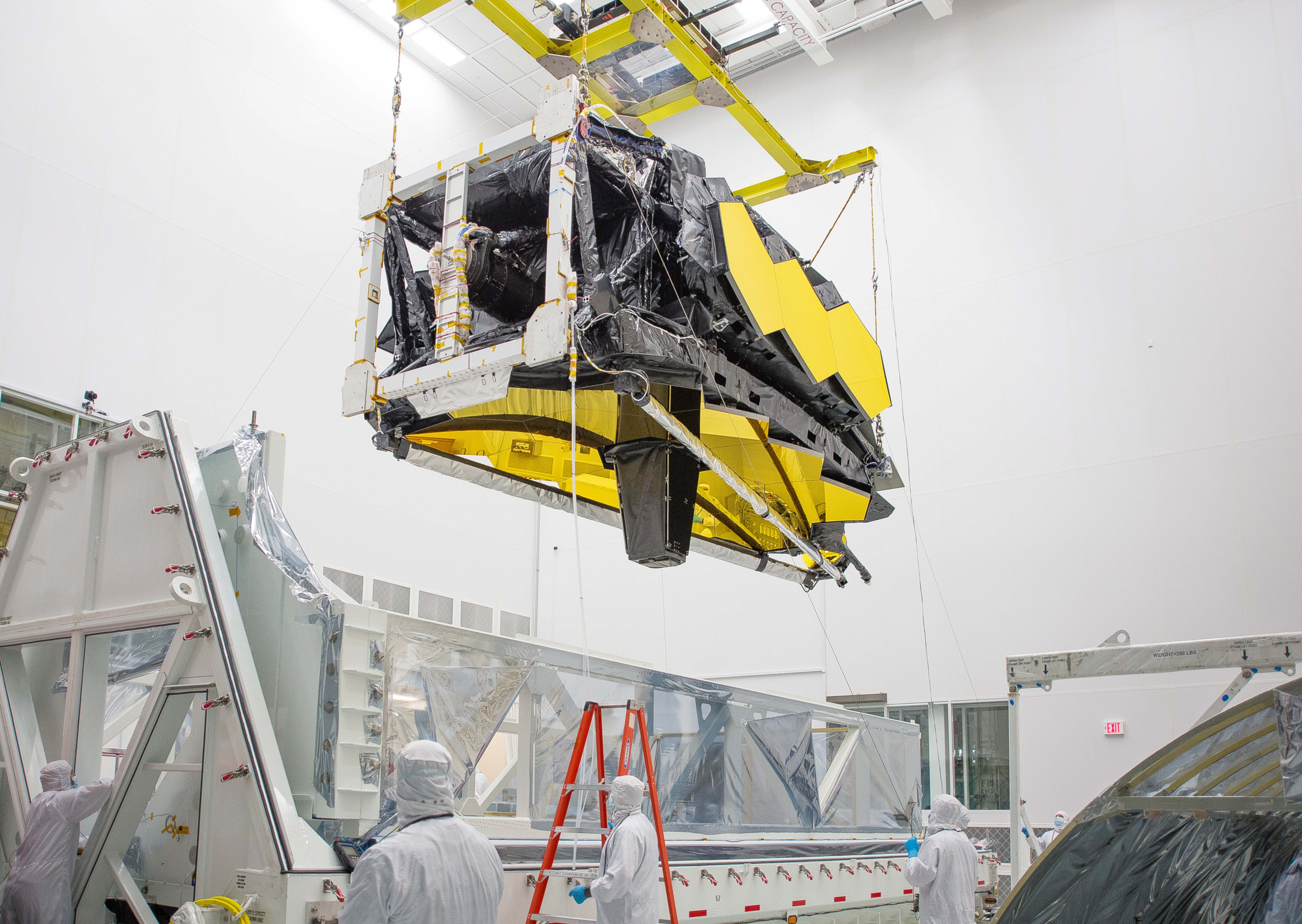JWST has made the journey from the NASA Johnson Space Center in Texas where it has been for the last nine months undergoing extensive cryogenic testing, to Northrop Grumman Aerospace Systems (NGAS), California, where it will remain until it is ready for launch in mid-2019.
Whilst at NGAS the main JWST mirror will be integrated with its sunshield, an essential part of the spacecraft that will keep the telescope from overheating following launch. This is also a crucial time for the instruments on board JWST and teams from the UK-led instrument the Mid Infrared Instrument (MIRI), are heading over to the US to be part of the testing.
Timothy Grundy MIRI Lead Instrument Engineer, STFC RAL Space said: “On arrival at NGAS, MIRI will undergo standard health checks to prove that it is in good working order. This will continue a long series of room temperature tests, stretching back to instrument assembly at STFC RAL Space in 2010/11. I will oversee the preparation and execution of the MIRI tests, as well as the analysis of the results, this is planned to take around one week and will be carried out simultaneously with the three other instruments that make up the Optical Telescope Element and Integrated Science Instrument, known as OTIS. We are very much looking forward to starting what will be the final steps towards the launch of the mission.”
Once MIRI and the other instruments, and the telescope have completed their health checks, OTIS will be ready for integration with the spacecraft. This will see the MIRI optical system joined to the rest of the MIRI cooler hardware (already on the spacecraft) for the first time. Further health checks will follow after the integration process is complete, including the first ever test where MIRI is powered by the spacecraft.
We are looking forward to hearing more from JWST during this important time at NGAS. You can see how JWST made the journey from NASA Johnson to NGAS.

Image: OTIS being loaded into its container
Credit: NASA/Jolearra Tshiteya
Notes to editors:
The James Webb Space Telescope (JWST)
The James Webb Space Telescope is an infrared observatory, scheduled for launch mid-2019. JWST, which is a joint collaboration between ESA, NASA and the Canadian Space Agency (CSA) will consist of a passively cooled 6.55m aperture telescope, a suite of infrared cameras and a range of other astronomical instruments.
JWST will find the first galaxies that formed in the early Universe, connecting the Big Bang to our own Milky Way Galaxy. JWST will peer through dusty clouds to see stars forming planetary systems, connecting the Milky Way to our own Solar System. JWST’s instruments will be designed to work primarily in the infrared range of the electromagnetic spectrum, with some capability in the visible range.
The Mid Infrared Instrument (MIRI)
MIRI is an infrared camera and spectrometer and will operate between wavelengths of 5 to 27 microns, a region which is difficult to observe from the ground. The instrument has several unique advantages; its location in space will remove the blocking and large background noise effects of the atmosphere which limit ground-based telescopes. JWST can be cooled to a very low temperature; this reduces the emission from the telescope and therefore greatly improves its sensitivity. JWST will have a much larger mirror than any other infrared space telescope, giving improved angular resolution.
MIRI was developed in a collaborative effort between scientists and engineers from ten European countries, led by the UK and the Jet Propulsion Laboratory (JPL), with the support of ESA and NASA. The UK team is made up of a partnership between the Science and Technology Facilities Council’s (STFC) UK Astronomy Technology Centre and RAL Space facilities, the University of Leicester and Airbus Defence and Space with funding from the UK Space Agency and ESA.
UK Space Agency
The UK Space Agency leads the UK efforts to explore and benefit from space. It works to ensure that our investments in science and technology bring about real benefit to the UK and to our everyday lives. The Agency is responsible for all strategic decisions on the UK civil space programme. As part of the Department for Business, Energy & Industrial Strategy, the UK Space Agency helps realise the government's ambition to grow our industry's share of the global space market to 10% by 2030.
The UK Space Agency:
- Supports the work of the UK space sector, raising the profile of space activities at home and abroad.
- Helps increase understanding of our place in the universe, through science and exploration and its practical benefits.
- Inspires the next generation of UK scientists and engineers.
- Regulates and licences the launch and operation of UK spacecraft, launch operators and spaceports.
- Promotes co-operation and participation in the European Space Agency and with our international partners.
